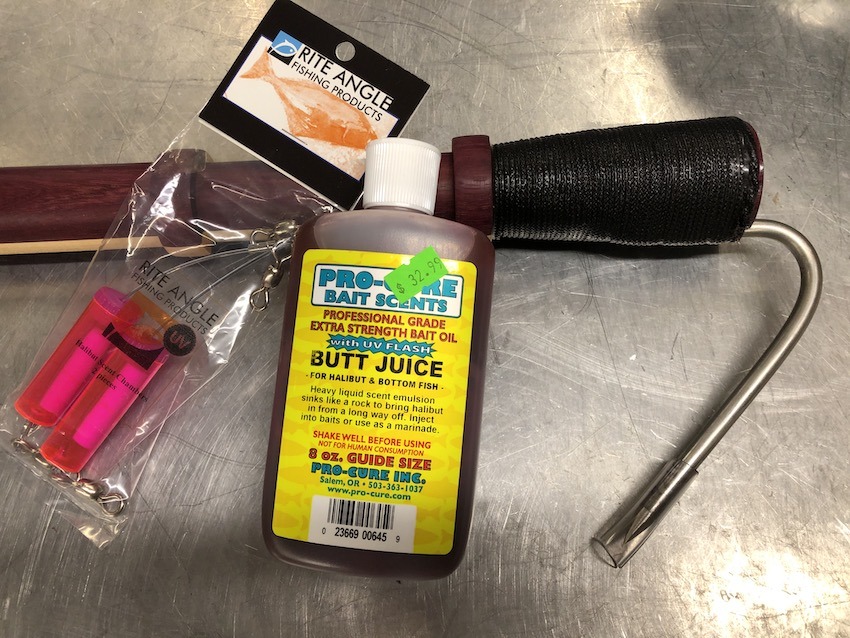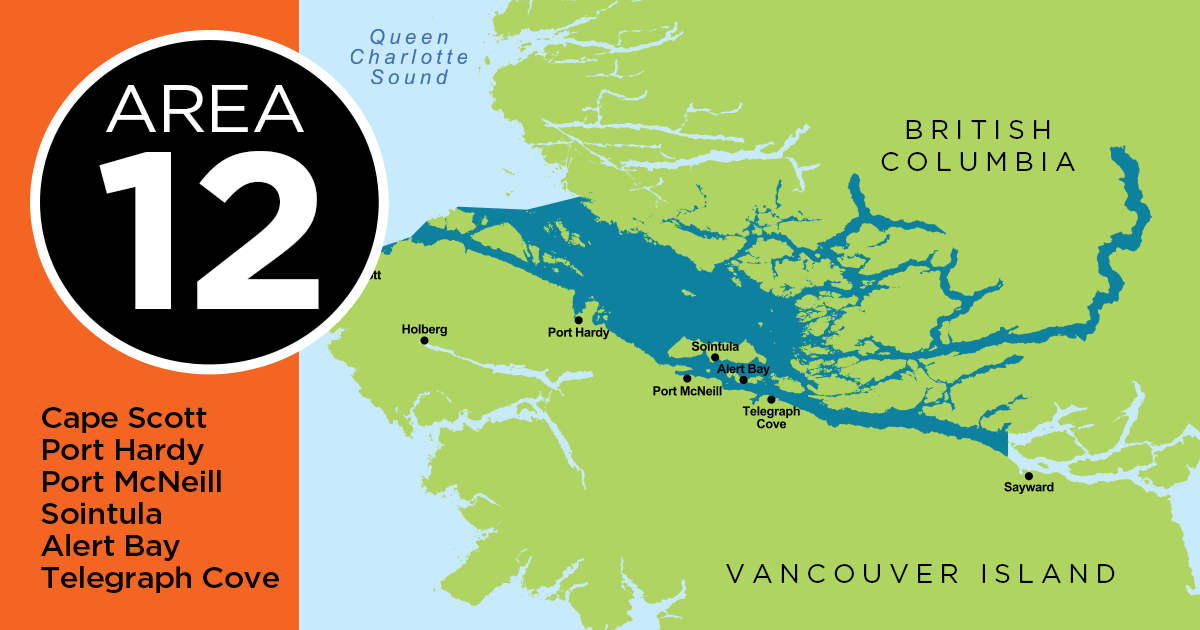
There are many well-known halibut fishing locations around Vancouver Island, such as the west coast, Juan de Fuca, and the north island. But occasionally, and with increasing frequency, halibut are being taken in Georgia Strait. For the last 6 years or so, salmon fishermen have been catching some halibut while trolling, typically when they are fishing deep and near the bottom for Chinook. Many of these fish have been photographed and the location of the catch has been verified. Additionally, halibut carcasses have been observed at east Vancouver Island fish cleaning stations. Therefore, the question of how to find and target Georgia Strait halibut has become a topic of discussion in tackle shops and at boat ramps.

Ben Wyatt with a nice halibut caught near Point Holmes
While historically Georgia Strait held a large population of halibut, it is said to have been depleted by the 1950s. After all, places like Halibut Bank, must have seen some halibut at one time. However, around 2014, resident fishermen started reporting incidental halibut catches. Around the same time, commercial dogfish long liners were complaining of increasing halibut by-catch once they fished deeper than 400′ to 500′. This was bad for them, because if they have too much by-catch they may get restricted from certain areas. With this interesting information in hand, some island fishermen began the search for the elusive Georgia Strait halibut.

Jordan Brassens hauling a halibut at French Creek
Certain locations have long held the reputations of holding a few halibut, such as the east sides of Hornby and Galiano Islands. However, recent reports have come from many areas typically associated with salmon fishing. So while one could just fish those places, a close examination of marine charts should be the first step.

Nautical Charts Georgia Strait
Halibut locations are typically sand or mud bottom with some sort of structure to hold or funnel bait. Look for holes and humps in an otherwise flat area. Also note any underwater draws that drop down into valleys. Often halibut will be located where a draw narrows, as it funnels bait right to them.

Tammy Morrison finds halibut from a kayak in Nanaimo!

Tammy Morrison Neck Pt. Nanaimo
There are two ways to target halibut: jigging or trolling. Both have their advantages and disadvantages.
Jigging For Halibut

Halibut Jigging Gear
Jigging is the most popular technique and is used when a halibut-rich location is well-known. Sometimes this is done at anchor, and sometimes just drifting over the fishing grounds. Anglers often use a chum bag and jig down current from it in the scent trail.

Yum Yum Bait can be used in a chum bag—poke holes in the can.
This works well in a proven halibut spot. However, when exploring a new area, you’ll cover more ground trolling until you locate the fish. In fact, in situations where the fish are not concentrated, trolling may continue to be the best method. For jigging, large level-wind reels with braided line on short, stiff rods are necessary. Two-speed reels or even electric reels would be a good idea, as according to the reports from the commercial fishermen, the Georgia Strait halibut are more common in deep water. The main benefit of an electric reel isn’t so much for hauling in a fish but to assist in checking your lure frequently—reeling 2 lbs of lead from 400’+ over and over can get tiring. Two-speed reels are useful for the same reason. At depths such as these, a chum bag is not practical, so lots of scent and bait on the lure is a good idea. Large scent containers attached to the line can greatly increase success.

Scent Chambers For Fishing
However, Georgia Strait has a large population of dogfish. Dogfish are particularly attracted to scented lures, as are all sharks, and this has proven to be a problem when attempting to locate halibut. Dogfish are also a lethargic predator and are less able to take a moving bait than a stationary one, so trolling helps avoid them. As stated above, it also increases the ground covered when looking for fishy locations. Unfortunately, trolling limits the depth one can fish in. Even with braided downrigger line and 20-lb cannon balls, going deeper than 250′ to 300′ is not practical. However, it may still be the best way to target halibut when many dogfish are present.
Trolling For Halibut
To troll for halibut, several lures can be used. Large spoons or hoochies behind a glow flasher or even a large Spin-N-Glo have proven effective.

Halibut Trolling Lures
Scent on the lure is still useful if you’re trolling fast enough that dogfish have trouble taking the lure. If you are catching dogfish, speed up. Halibut have been seen on underwater video actively chasing down lures fished at trolling speeds. Troll your lure along the bottom in likely locations. Slack tide is always the best time, as it is easier to fish deep when there is less current. When halibut are found in shallower water, flood tides can be productive, as the halibut seem to set up where the current will bring the bait to them. But it is often not possible to keep your fishing lure near the bottom when the current is strong.
Landing A Halibut
If you are targeting halibut, have a plan to land them. Unlike a salmon, a larger halibut can often destroy a landing net. Anything over 45 lbs should probably be brought aboard with a gaff. It is recommended to have a harpoon or flying gaff to restrain the fish at the boat in case the fishing line breaks while landing the fish.

Fishing Harpoon Tips
Halibut have very sharp teeth, and many have been lost right at the boat when they bite the line. Also, have a way to measure the fish in the water if it is close to the maximum allowable size. Either put marks on your boat at the waterline or have a measuring stick of some sort on board. If it is too large, be prepared to cut the line and let it go with your lure, as retrieving a lure from deep inside a halibut is nearly impossible without first killing it. Use non-stainless hooks so they rust out of the fish. Consider single barbless hooks, as halibut are not hard to hook, and they make release easier. And as always, have your rockfish descender ready whenever you are fishing. These work well to save rock cod and are required by law.

Brendan Somers and his son Boston after a day at Kitty Coleman
Halibut fishing in Georgia Strait might not be as productive as some other areas, but it is a fun pursuit. Not many fishermen are trying it, and the rewards can be great. With fewer salmon opportunities, it is a good time to explore other fisheries, especially when the population of the target species seems to be rising. If you are successful at catching a Georgia Strait halibut, make sure to take a picture and send it in to Island Fisherman.
This article appeared in Island Fisherman magazine, never miss another issue—Subscribe today!
Visit the Store
$34.99
$34.99
Featured Catch

Joel Unickow halibut (Photo: Rob Frawley Lucky Strike Sportfishing Tofino)








